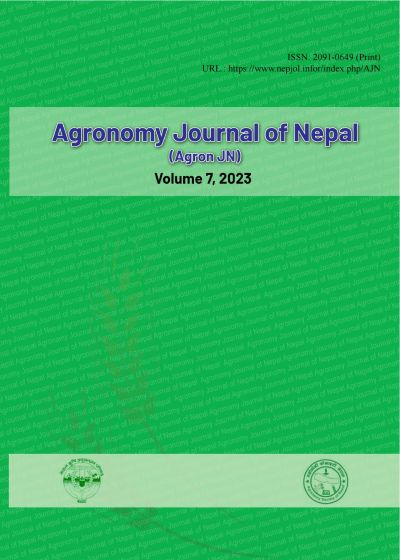Residue Management and Nutrient Dynamics in Conservation Agriculture: A Review
DOI:
https://doi.org/10.3126/ajn.v7i1.62169Keywords:
conservation tillage, residue retention, mineralization, nutrient, dynamicsAbstract
Conservation tillage significantly influence the physico-chemical properties of soil that makes microclimate conducive for crop growth and productivity. The use of chemical fertilizers alone to sustain high crop yield has not been successful due to its effects on soil acidity, nutrient leaching, degradation of soil’s physical properties and organic matter. Higher levels of soil organic carbon, microbial biomass of carbon and nitrogen, nitrogen mineralization, total nitrogen and extractable phosphorus are directly related to crop residues under conservation tillage management. Conservation agriculture (minimum or no tillage with residue retention and crop rotation) practices has potential for increasing the nutrient supply to crops through changes in the mineralization and immobilization of nutrients by microbial biomass and provide an eco-protective environment for sustainable production. Conservation agriculture reduces nutrient percolation/leaching from the soil profile, can redistribute the soil profiles thus affects nutrient supply, and its storage. Entire soil-plant continuum changes after the conversion from conventional agriculture to conservation agriculture. The review therefore highlights the nutrient dynamics under crop residue management with no or minimum tillage.
Downloads
Downloads
Published
How to Cite
Issue
Section
License
Copyright (c) 2023 Agronomy Society of Nepal (ASoN)

This work is licensed under a Creative Commons Attribution-NonCommercial 4.0 International License.
ASON permits for free use, distribution and reproduction in any medium if the original work is properly cited and not used for commercial purposes.




